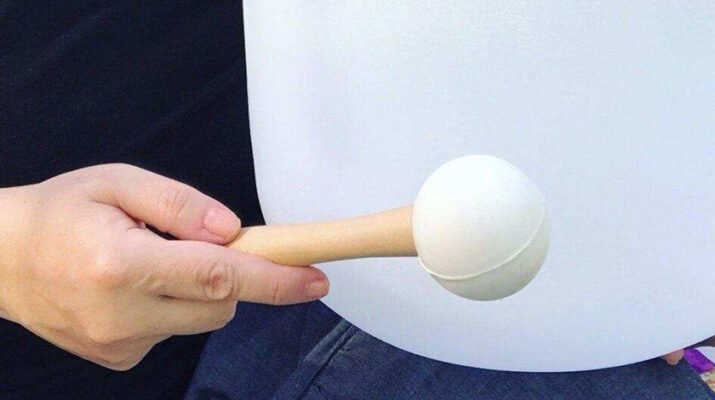By Deborah Jeanne Sergeant

Sound therapy seems odd to those unfamiliar with the concept. However, to people struggling with health issues unaddressed by conventional medicine, it can help calm the central nervous system to promote the body’s own ability to heal.
Tamara Rettino, doctor of acupuncture and Chinese medicine and licensed acupuncturist, offers sound baths at Acupunktrix in Buffalo.
“We are naturally in tune with sound and rhythm through our breath and heartbeat,” Rettino said. “Music, rhythm, drumming and chanting are part of indigenous culture. In modern society, we’ve lost touch with that. The closest is when you go to a concert and feel a lift from the performance. Music is a medicine that speaks to our soul. It also has physiological responses.”
She added that sound vibration can regulate the heart rate and breathing, stimulate bone growth and prod the body to heal itself. Some people seek sound therapy for anxiety or depression; others have specific health issues that they feel have not been sufficiently addressed through Western medicine.
The difference between music therapy and sound therapy is that sound therapy is not meant to be musical. It’s more about vibration than sound. Rettino described the sounds as “unfocused, unlike a song and allows you to drift off in a way that a song might not.”
Although people can derive some benefit from hearing videos of sound therapy on YouTube, Rettino said that vibration is more accessible through in-person sessions.
“When in person, you can feel the sound vibration in your body and you get a much stronger cellular response and of the parasympathetic nervous system, which helps you relax,” she said. “The tissues, nerves and bones can feel the vibration which stimulates the brain to help you heal. Sometimes I use a tuning fork on acupuncture points. It sends a message to the brain which responds by sending out white blood cells or natural opioids to help you relax and help you get into homeostasis and heal.”
She offers sound bathing, which typically refers to a group of people undertaking sound therapy (no water is involved), but most of the time, Rettino offers it in individual sessions to complement her acupuncture work.
Rettino said that some theories about sound therapy state that different notes and tones affect different areas of the body. Overall, the vibration from the crystal singing bowls, buffalo drum, spirit flute, Tibetan brass bowls, Chinese gong, various chimes and other instruments she uses create “a deep meditative state, which sets up the body for deep healing,” she said.
Rachel Stevens, a sound healing practitioner accredited with the Complementary Therapists Accredited Association and meditation coach, operates Ambient Sound Healing in Clarence. Tamara Rettino, doctor of acupuncture and Chinese medicine and licensed acupuncturist, offers sound baths at Acupunktrix in Buffalo.
She uses instruments such as crystal singing bowls and two types of tuning forks. The weighted forks are applied to pressure points and non-weighted forks do not touch the body. She also has vibroacoustic sound tables. Because vibration — and not just sound — do the work, sound therapy can even help profoundly deaf people.
“Sound healing uses various tones and rhythms to get the brain into a slower state of being,” Stevens said. There are five different brainwave states. We operate in the second fastest, beta. It’s also linked to high anxiety. When you use lower frequency notes, it trains the brain waves into theta, the second slowest brain wave state. It’s the state we’re in as children, when dreaming or when under hypnosis. It helps you to relax.”
This aids in helping the body get out of the fight-or-flight response state and tap into the relaxation of the parasympathetic nervous system. Stevens said that in this state, the body is “in a good receptive state to do the healing.”
She sees clients weekly for three weeks and afterwards for monthly sessions or as needed. But sound therapy is not meant to replace other treatments prescribed by a medical doctor.
“A lot of people think sound healing is ‘woo,’ but there’s a lot of scientific backing coming out to support it, not only from an anxiety standpoint, but also from a quantum physics standpoint as to how vibrations affect us,” Stevens said. “As a society, we need to get back to the sounds that help us relax. It’s not just our brains but our bodies that are responding.”
She said that sound therapy is contraindicated for people with epilepsy and those with pacemakers should avoid the vibroacoustic sound table. Clients should check with their healthcare provider first.

